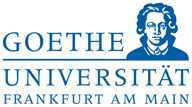Project MaKreKi
Mathematical Creativity of Children
The interdisciplinary project MaKreKi uses a longitudinal design to examine the development of mathematical creativity in early childhood.
In order to fully understand mathematical creativity, it is important to understand the relationship between the child’s social environment and his/her individual biography. Through a screening, 40 children that can be characterised as mathematically creative were identified. These children were accompanied from our project in preschool, kindergarten and primary school. Every 6 months they took part in mathematic games and discovery situations in which they could express their mathematic potential. Of special interest were the unusual and surprising ways that these children used in dealing with these situations. The working processes of the children were subsequently analyzed by means of interpretative methods. In order to find out more about the social and familial environments of these children, their parents were interviewed by means of a half standardized questionnaire. Furthermore the attachment patterns of these children were diagnosed using the story completion test MCAST. The relationship between the attachment pattern of a child and its mathematic creativity were studied in individual cases.
Selected Publications
- Brandt, B., Vogel, R., & Krummheuer, G. (2011). Die Projekte erStMaL und MaKreKi: Mathematikdidaktische Forschung am “Center for Individual Development and Adaptive Education” (IDeA). Münster: Waxmann.
- Kortenkamp, U., Brandt, B., Benz, C., Krummheuer, G., Ladel, S., & Vogel, R. (2014). Early Mathematics Learning Selected Papers of the POEM 2012 Conference. New York, NY: Springer.
- Krummheuer, G., Leuzinger-Bohleber, M., Müller-Kirchof, M., Münz, M., & Vogel, R. (2013). Explaining the mathematical creativity of a young boy: An interdisciplinary venture between mathematics education and psychoanalysis. Educational Studies in Mathematics, 84, 183–199. doi:10.1007/s10649-013-9505-3


